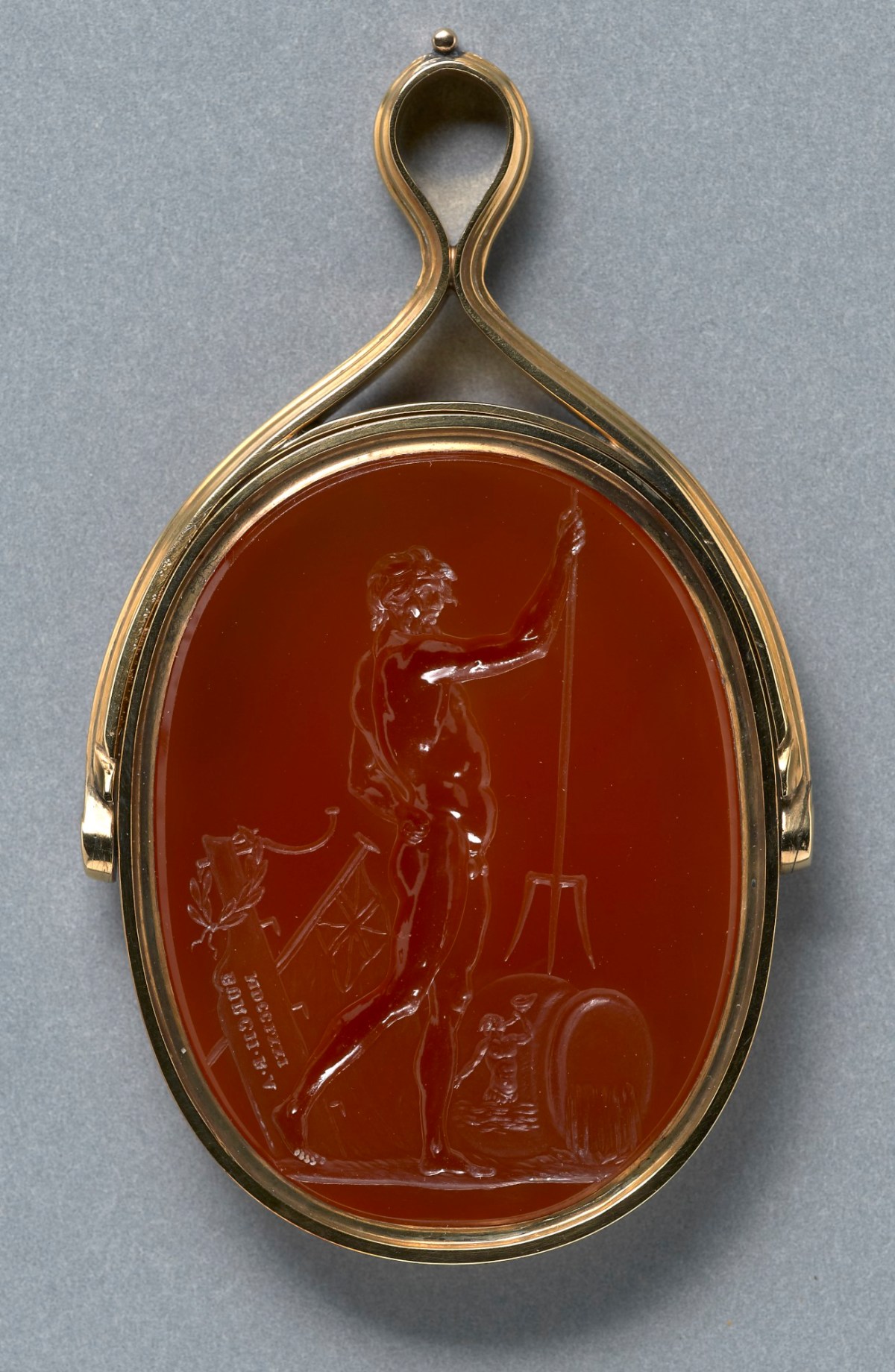
Frame for Edward Burch RA 'Neptune'
66 mm x 40 mm x 5 mm. © Photo: Royal Academy of Arts, London. Photographer: Prudence Cuming Associates Limited.
This image is not available to download. To licence this image for commercial purposes, contact our Picture Library at picturelibrary@royalacademy.org.uk
Neptune, 1771
Edward Burch RA (1730 - 1814)
RA Collection: Art
The standing figuree of Neptune, god of the see ‘resting on his trident after having crowned the British navy with victory’. Richly set in a gold frame, inscribed with a date (1770) and signed BURCH RA, this intaglio celebrate, with little doubts, the victory of the British Royal Navy over the Spanish fleet during the Falklands crisis in 1770.
This masterfully engraved cornelian, a brownish-red semi-precious stone, was Edward Burch's diploma work, the work of art presented to King George III, Academy's royal patron and founder, upon his election as Member. In 1769 Burch had resigned as director of the Society of Artists to enrol as student in the newborn Royal Academy the following year. Soon he was made an associate, and in 1771 became a full academician, among the first group of elected members.
At the time Burch joined the Academy he was already the foremost gem engraver in Britain. As a self-taught, he reached the peak of excellence having developed a great sense of anatomy and mastering and original modelling technique. His gems were shown regularly at the Royal Academy exhibitions as the where also found in the best collections of Europe, including the of Wales (later George IV), his brother the Duke of York, 4th Duke of Marlborough, Catherine the Great and the King of Poland.
He took a lively part in academy affairs and its social life, and was popular though he was remembered as 'often coarse in both manner and expression'. By the end of the century the originality of his work, not conforming to the neo classical canon, together with a failing sight and a decline in demand for engraved gems left him in penury. From 1794 he was appointed librarian to the Royal Academy, a post traditionally given to indigent artists.
Object details
66 mm x 40 mm x 5 mm
Associated works of art
2 results
Start exploring the RA Collection
- Explore art works, paint-smeared palettes, scribbled letters and more...
- Artists and architects have run the RA for 250 years.
Our Collection is a record of them.





